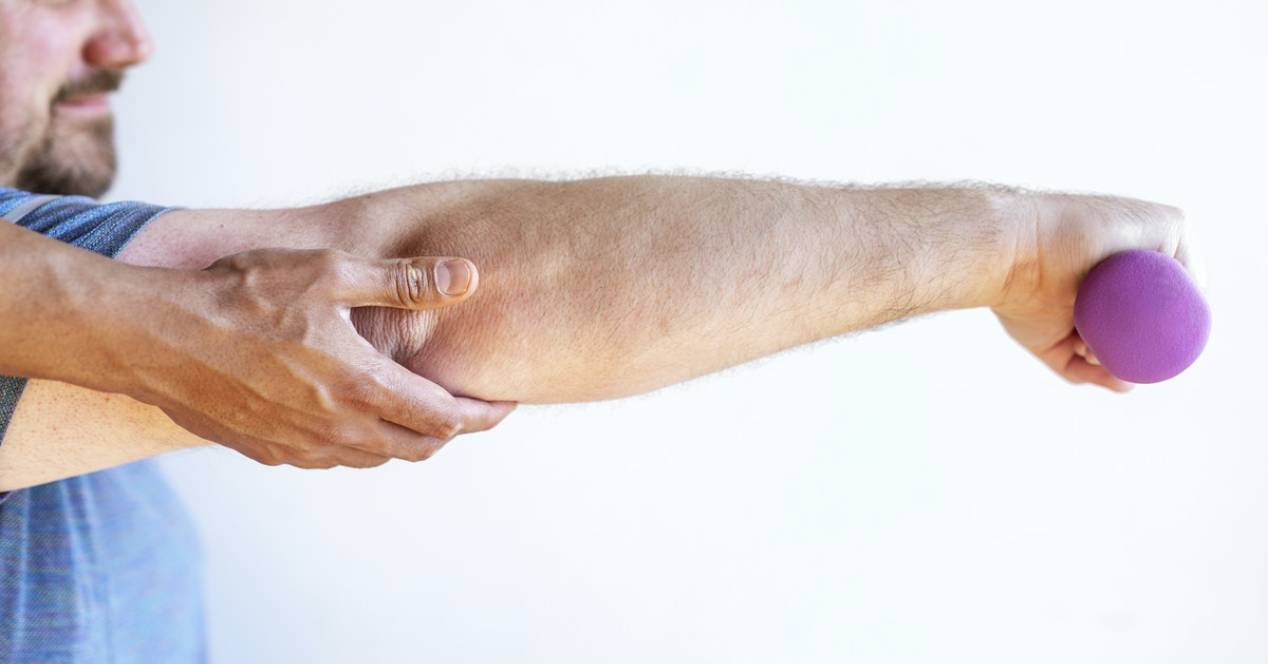
Pulling off 10 bicep curls on your right side but struggling to complete 5 on your left? Although it's common to have a dominant side, slight differences in strength, balance, and mobility can sometimes indicate muscle imbalances, which could hurt your exercise performance and increase your risk of injury.
When muscles balance around a joint, it means they are contracting at a speed and intensity to help the joint move the way it is meant to move. With any movement of the body, there are prime movers, which are the muscles that are supposed to provide the main force to move the joint, and there are assistants, which are muscles that provide help when the prime movers need help. A muscle imbalance can occur, for example, when the prime movers are too weak to do their job, forcing the auxiliary muscles to try to compensate.
What causes a muscle imbalance?
This type of muscular decompensation does not have to appear exclusively in athletes. Those who do not do any strength training often have significant muscle atrophies, leading to major muscle imbalances. Below you will find the factors that usually influence this type of muscle problem.
Have an inactive life
A sedentary lifestyle is a possible culprit. We spend our days hunched over in front of computer screens, sitting at desks and in cars or with our necks bent looking at our smartphones.
Sitting for prolonged periods causes your hip flexors to become tight and short, which can set you up for muscle imbalances, including in your glutes.
Perform repetitive movements
Doing the same movement over and over again can also cause muscle imbalances. This is because when you use the same muscles repeatedly in the same way, they can be overworked and stuck in a semi-contracted position, which can ultimately compromise the joint.
This can be adopted from everyday habits, such as carrying your gym bag on the same shoulder, which regularly forces one side of your body to exert more effort than the other.
But it can also take the form of healthy physical activities. Repetitive exercises like running, for example, primarily work your body in one plane of motion; they don't necessarily help you develop the full strength that you could develop through activities that involve more varied movements.
Genetics
Another factor behind muscle imbalances is your genes. If, for example, your mother and grandmother both have back problems, you may be predisposed to experiencing similar problems later in life.
Whether it's the natural curves of our spine or how our joints are built, genetics can play a role in susceptibility to certain problems.

Key Symptoms of Muscle Imbalances
pain and tension are prime indicators of a muscle imbalance. For example, if your paraspinals (the muscles that run up and down on either side of your spine) have to compensate for weak abdominals and deep back muscles, your back will eventually start to hurt.
Asymmetry is another obvious symptom. This unevenness can show up in how you look (ie, one shoulder seems higher than the other) and/or how you move (ie, one side is weaker or wobbly).
That means muscular imbalances can cause someone to lack the strength potential they would have if their prime movers were working properly.
In fact, a muscle imbalance is often the reason why some people cannot perform certain exercises correctly. Case in point: pull-ups. People whose back muscles are too weak to lift their bodies will use the smaller muscles in their arms and shoulders (ie their assistants) to try to make the movement happen, with little to no success.
That kind of situation is not only true for pull-ups. Everytime that your technique fails during an exercise, it can reveal where you are experiencing muscle imbalances. Do your knees buckle when you squat? You may have weakness or limitation in the hips. Does your lower back sag during planks? That could be a sign of core weakness.
Risks of having muscle imbalances
A muscle imbalance might seem like a minor nuisance right now, so what if your right leg shakes more than your left during strides?
If left untreated, muscle imbalances can cause pain, dysfunctions and injuries. This is because they can alter the position of the joint they are attached to, changing their range of motion in potentially dangerous ways.
If this happens repeatedly over a period of time, your chance of injury is greater, both to the muscles, which can overload from supporting too great a load for too long, such as in the joints, which do not receive the support they need to stabilize themselves during strenuous exercise.
The most common example of this domino effect is caused by the weak glutes. In that scenario, the deep rotators of the hip can take over, which can trigger hip pain and even pinch the sciatic nerve. Another example: weak shoulder muscles When the pectoralis minor takes over the serratus weak, it can increase the risk of shoulder and neck pain.
If the imbalance is in your core, it can cost you loss of flexibility, poor breathing, disrupted digestion, as well as injury or pain in your neck and back.

Is there a treatment?
Build strength and increase your range of motion they are essential when it comes to correcting muscle imbalances. Once you've identified your particular weak areas, you can focus your strength and stretching training on them. You may want to have a personal trainer, or a physical therapist if you're in pain, to help you develop a specific routine.
Whatever plan of action you decide on, know that your healing will not happen overnight. Muscle imbalances can be difficult to fix, especially if the pattern has been ingrained for a long time.
Retraining muscles is the hardest part. Once the auxiliary muscles have become accustomed to compensating for a weak prime mover, they will stubbornly continue to try to do so. It will take time, patience, and repetition to get them to break that unhealthy habit.
It takes a determined exercise to attack the unbalanced muscle. And often you have to make the move much easier than people expect. That could mean lifting less weight, refining and simplifying your technique, or both.
When it comes to addressing muscle imbalances, fix core issues it should be at the top of your to-do list. You are your base of operations. Proper core training is the foundation of fundamental human movement. No one can afford to neglect this basic component of the body.
Another useful option is to do unilateral exercises, that is, movements that train one side of your body at a time, like one-legged glute bridges or one-arm barbell rows. Moves like these will ensure you're not overly reliant on your dominant side, helping you isolate and remedy muscle imbalances.
The incorporation of exercises that promote movement in many different directions or planes is another useful strategy. Mix up your routine with a variety of push, pull, rotate and lateral movements. Doing exercises like these will help you avoid repetition and overtraining, reducing the risk of muscle imbalances.